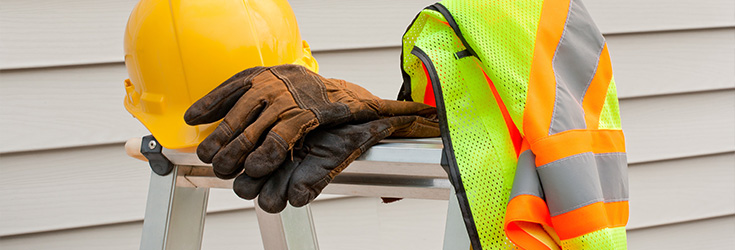HSE Release New Guidance On Safe Use Of Ladders
12/09/2017
You may have heard of the HSE, especially if you’re an avid follower of our blog. The British Health And Safety Executive is the national independent watchdog that attempts to minimise threats to safety and physical wellbeing in the workplace. To mitigate these risks, the HSE has recently released new guidance on the safe use of ladders. Here at Browns Ladders, we thought it was worth taking a quick look at what it says.
Keeping Yourself Safe While Using Ladders

While the scope of the HSE’s announcement is fairly broad, it’s taken care to highlight combination ladders as a specific ladder type to pay particular attention to. Firstly, it emphasises the importance of pre-use checks, which is also a big focus of ours here at Browns. It’s such a big concern, in fact, that we’ve previously published two articles which explain the quick ladder checks to carry out before you begin using one.
We won’t reproduce both articles in their entirety here, but instead we’ll sum them up briefly. You should always:
- Check for any kind of damage to the ladder (including broken rungs or split stiles).
- Ensure that it’s clean and free of dust or dirt (which can hide serious damage).
- Make sure that any moving parts are working as they’re supposed to be – specifically, ensure that the locking mechanisms are engaging correctly.
You can also minimise the risks associated with unsafe ladders by taking care that they’re stored and transported securely and appropriately, without exposing them to damage or damp conditions. Dampness especially can cause rot in wooden ladders, drastically reducing their safety.
Know Your Limits – And Beware Of Substandard Ladders
It’s always good to keep an eye on your equipment, but another key piece of advice from this recent HSE mailing is to ensure you’re fully confident of the capabilities of your ladder before you purchase it.
Telescopic ladders, for example, are becoming more and more popular amongst homeowners and tradesmen alike due to the many advantages they offer, such as their compact, versatile nature, not to mention their immunity to damp conditions and general ease of storage. However, they’re often rated for lower loads than rigid ladders, and their stiles are relatively easy to bend. This doesn’t make them unfit for purpose – far from it – it simply emphasises the need for users to be fully familiar with their equipment before carrying out a task.
A final warning from the HSE document concerns the number of substandard ladders currently on the market. These are cheaply built, cheaply imported and not always capable of carrying out the task they’re supposedly suited for. These are the types of ladders that are most likely to be involved in accidents or deaths. Just a few months ago we told you on the blog about how authorities in Derbyshire recalled thousands of these faulty ladders, once again underscoring the importance of practicing good ladder safety.
Here at Browns Ladders we’re passionate about your safety, and you can rest assured that we apply that same rigorous standard across the whole of our extensive product range. You can click here to browse it in its entirety, or give us a call on 01282 615517 to place an order, or to talk to a friendly member of our team. We’re here to help!
Don’t forget to follow us on Twitter: @brownsladders